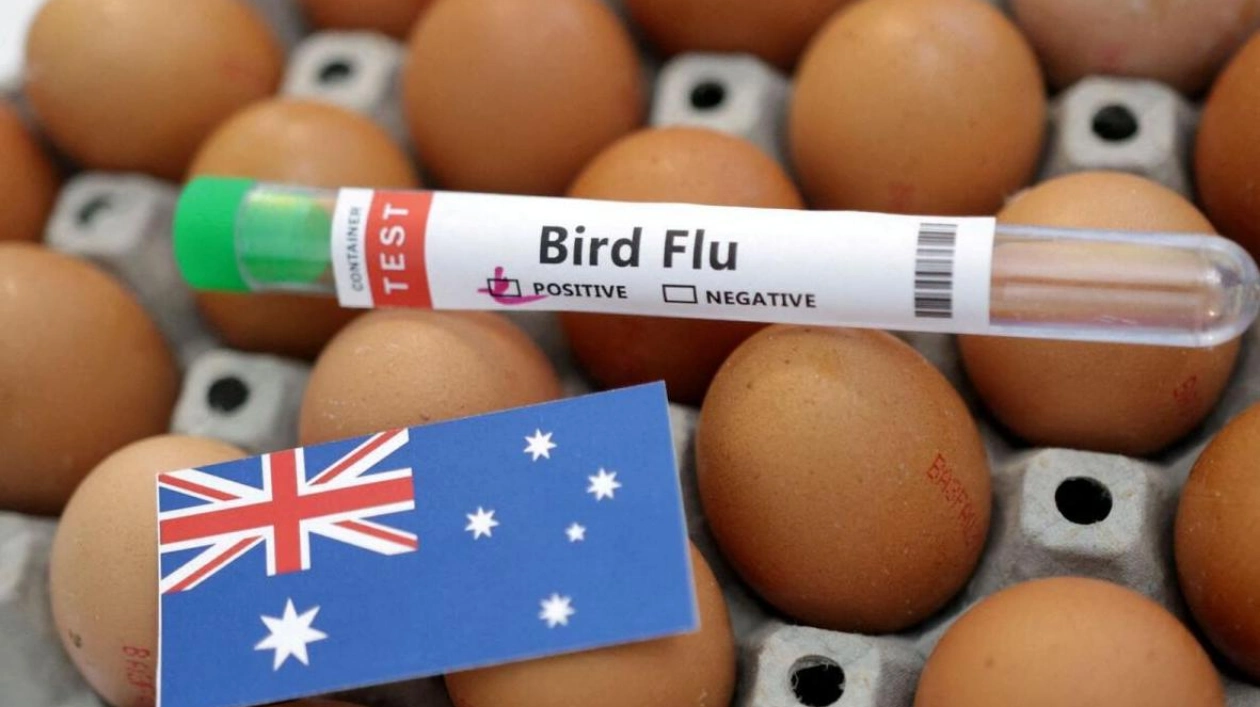Scientists monitoring the spread of bird flu are increasingly worried that gaps in surveillance could leave them lagging behind a new pandemic, according to interviews with over a dozen top disease experts conducted by Reuters. Many of these experts have been tracking the new H5N1 avian flu subtype in migratory birds since 2020. However, the virus's spread to 129 dairy herds across 12 US states suggests a shift that might make it more transmissible between humans. The virus has also been detected in various mammals, ranging from alpacas to house cats.
"It's like watching a pandemic unfold in slow motion," commented Scott Hensley, a microbiology professor at the University of Pennsylvania. "Currently, the risk is quite low... but it could escalate rapidly." Early detection of a potential human-to-human transmission allows global health officials to initiate vaccine development, widespread testing, and containment strategies promptly. Federal surveillance of US dairy cows is currently restricted to pre-state-crossing herd testing. State-level testing efforts vary, and testing of individuals exposed to infected cattle is minimal, according to government health officials and pandemic flu experts interviewed by Reuters.
"It's crucial to identify which farms are positive, the proportion of infected cows, how rapidly the virus spreads, how long cows remain infectious, and the exact transmission routes," explained Dutch flu virologist Ron Fouchier of the Erasmus Medical Center in Rotterdam. Dr. Jeanne Marrazzo, director of the US National Institute of Allergy and Infectious Diseases, noted that human surveillance is "extremely limited." Marrazzo described the CDC's human flu surveillance network as "essentially a passive reporting system." The US Department of Agriculture is more proactive in testing cows but does not disclose which farms are affected, she added. Several experts pointed out that differing strategies between animal and human health agencies could hinder a swift response.
"If you were designing the system from scratch, you'd have one agency," said Gigi Gronvall, a biosecurity expert at the Johns Hopkins Center for Health Security. "This isn't the only instance where environmental or animal issues impact human health." A USDA spokesperson stated that the agency is working "around the clock" with the CDC and other partners in a "whole-of-government response," noting that ongoing research indicates "America’s food supply remains safe, sick cows generally recover after a few weeks, and the risk to human health remains low." The CDC, in a statement, affirmed that it, "along with the USDA and state and local health departments across the country, has been preparing for the emergence of a novel influenza virus for nearly two decades and continuously monitors even the smallest changes in the virus."
Some pandemics, like Covid-19, emerge with little warning. In the 2009 H1N1 flu pandemic, the virus and its predecessors had circulated among animals for years before the outbreak, according to Hensley, but enhanced surveillance could have aided health authorities in preparation. Since late March, three people in the US have tested positive for H5N1 avian flu after contact with cows, showing mild symptoms. One person in Mexico was infected with a different H5 strain not previously seen in humans, with no known animal exposure. Other cases have been reported in India, China, and Australia, involving different strains. The World Health Organisation states that H5N1 poses a low risk to humans due to a lack of evidence of human transmission. However, some tools are available if the situation changes, including limited quantities of existing H5N1 vaccine and antiviral drugs like Tamiflu.
There are mechanisms in place to scale up production of tests, treatments, and vaccines if necessary, according to the WHO's head of flu, Wenqing Zhang. Other experts believe there is enough cause for concern to begin preparing for potential human-to-human spread, although the triggers for action vary depending on the role in the response, said Richard Hatchett, CEO of the Coalition for Epidemic Preparedness Innovations (CEPI). CEPI, which played a key role in funding Covid vaccine development, is now in discussions with research partners about H5N1. CEPI aims to build a library of prototype vaccines for pathogens with pandemic potential, enabling drugmakers to initiate large-scale production and distribute vaccines where needed within 100 days of an outbreak.
Some countries are taking measures to protect against H5N1. The United States and Europe are securing "pre-pandemic" flu vaccine doses for high-risk groups, including farm and lab workers. Finland is set to become the first country to vaccinate fur and poultry farm workers, as well as animal health response personnel. Expanding vaccine access is also challenging, said the WHO's Zhang. Manufacturers of potential pandemic flu vaccines also produce seasonal flu shots and cannot make both simultaneously. Since most flu vaccines are produced using virus grown in eggs, it could take up to six months to produce pandemic shots. The US is in talks with Moderna to utilize their faster mRNA technology for pandemic flu shots. The experts all emphasized the need to balance swift action to avert a threat against overreacting.
"We aim to sound a note of caution," said Wendy Barclay, a virologist at University College London who researches avian flu for the UK Health Security Agency, "without causing unnecessary panic."






